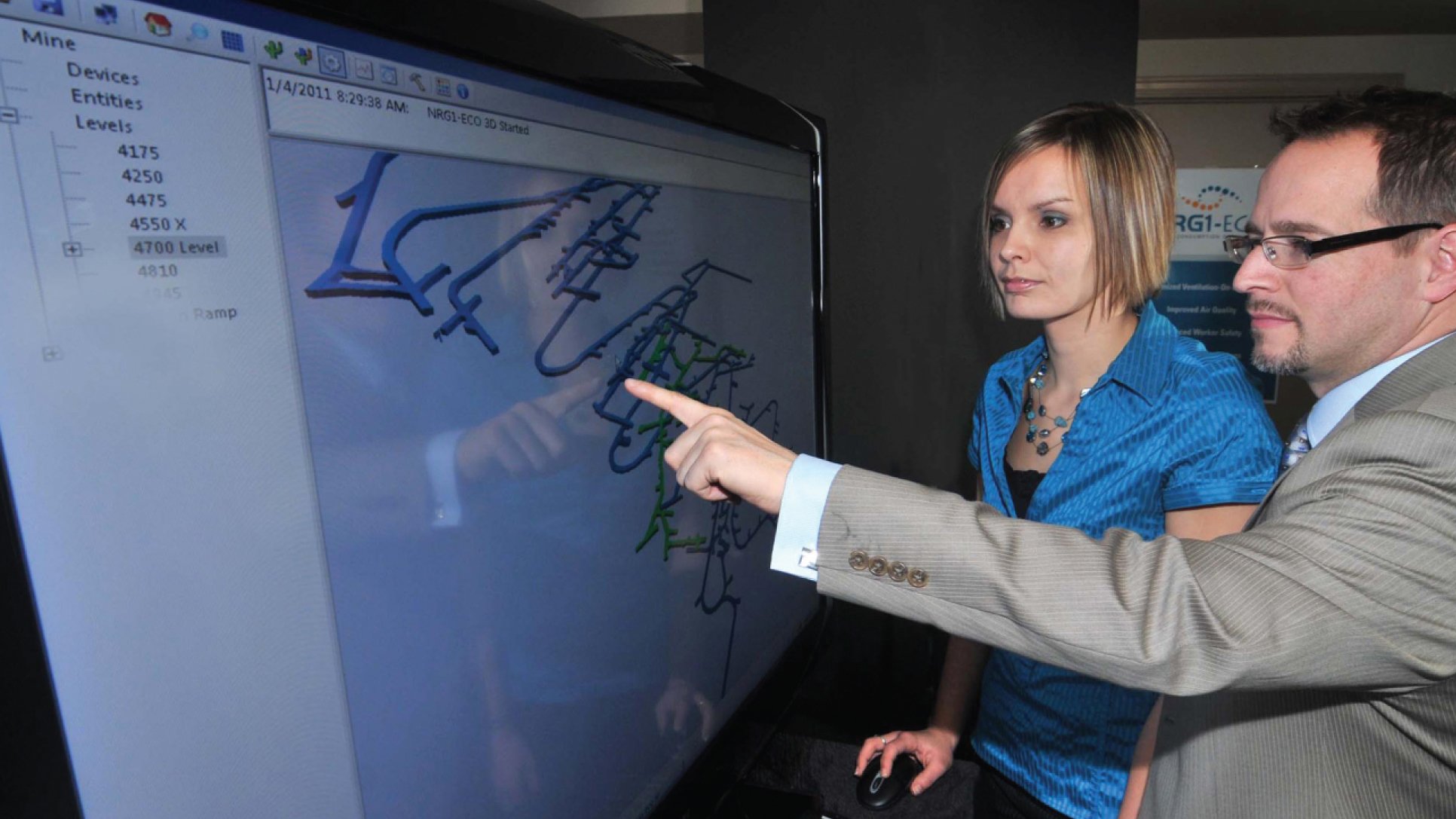Background
Without ventilation, the air in a mine is filled with dangerous contaminants. Miners may work at depths of a mile or more underground where contaminants such as carbon monoxide, as well as the dust created from the mining cycle exist. Worker safety is essential to any mine’s operation and success, but also presents challenges.
Mining companies must provide fresh air to the work force to ensure a safe working environment. This airflow is continuously removing and diluting contaminants. The cost of ventilating mines is high and rising even higher as energy prices increase and mines expand in depth. Approximately 50 percent of a typical mine’s energy costs are associated with ventilation.
Many hard-rock mines contain dozens of main ventilation fans and hundreds of auxiliary ones. Both types are usually controlled manually and operated continuously at maximum speed, or peak capacity, to keep
air flowing through each part of the mine 24 hours a day. Unfortunately, keeping all those fans running at maximum speeds – even during non-peak demand periods – wastes precious energy.

